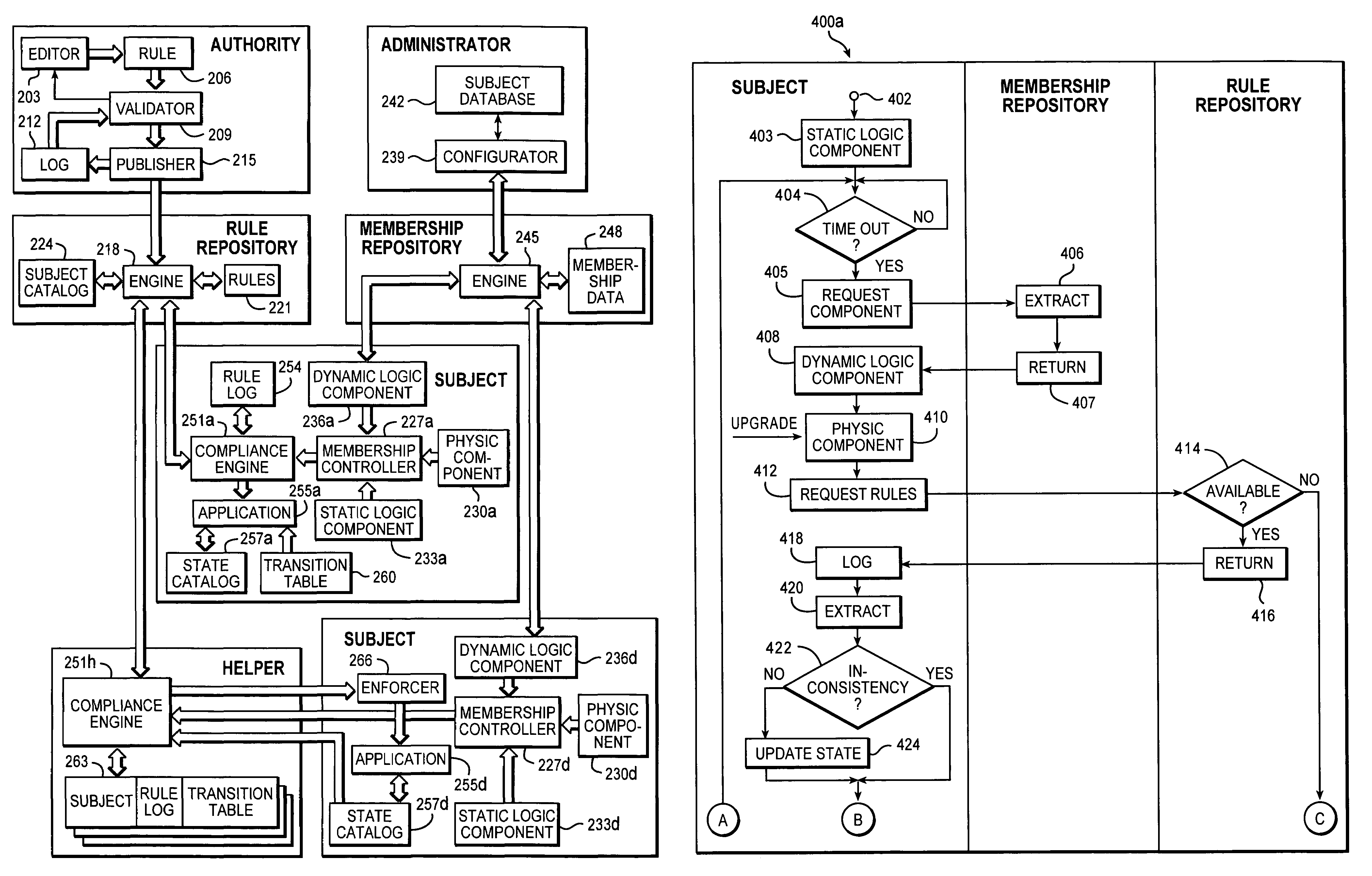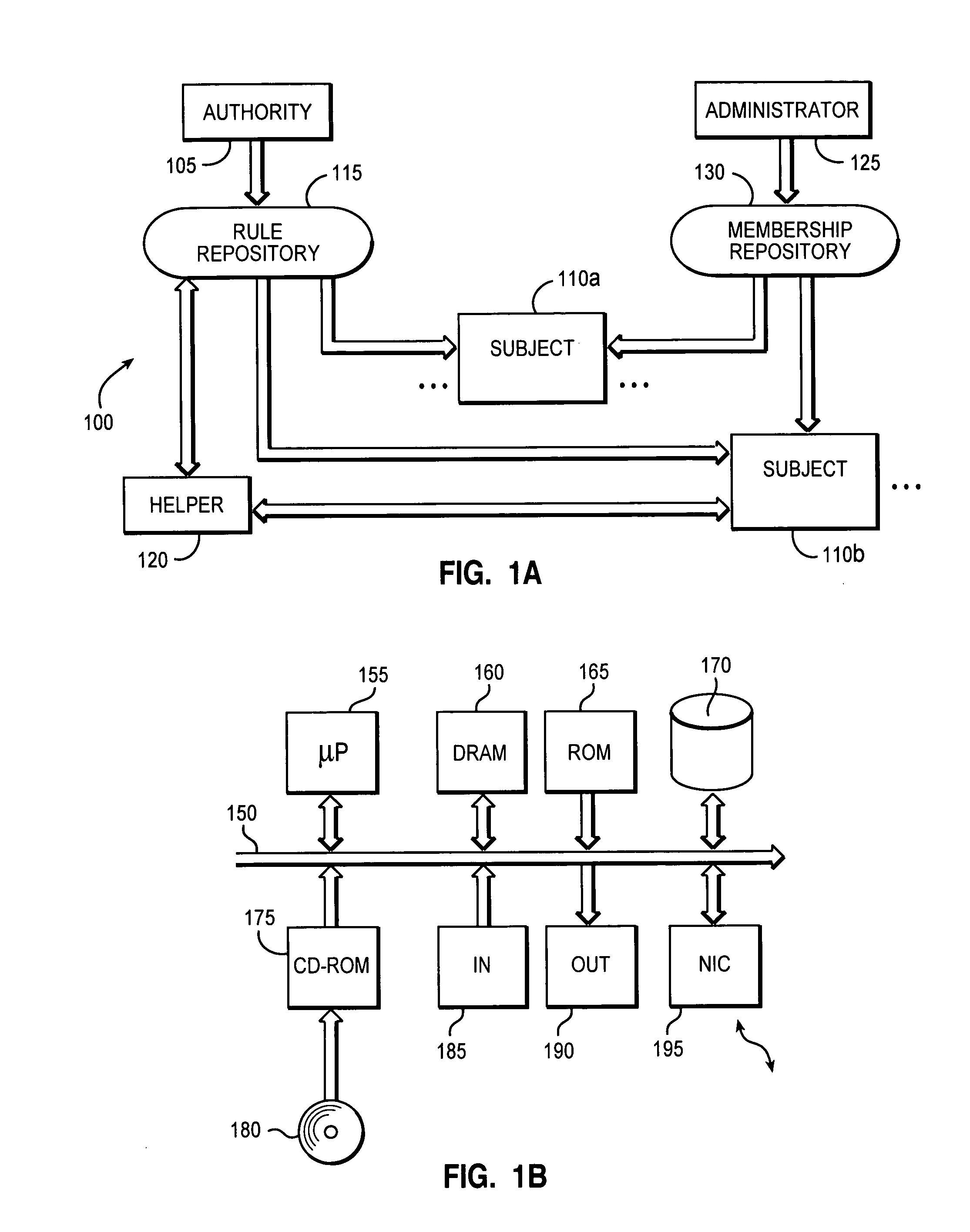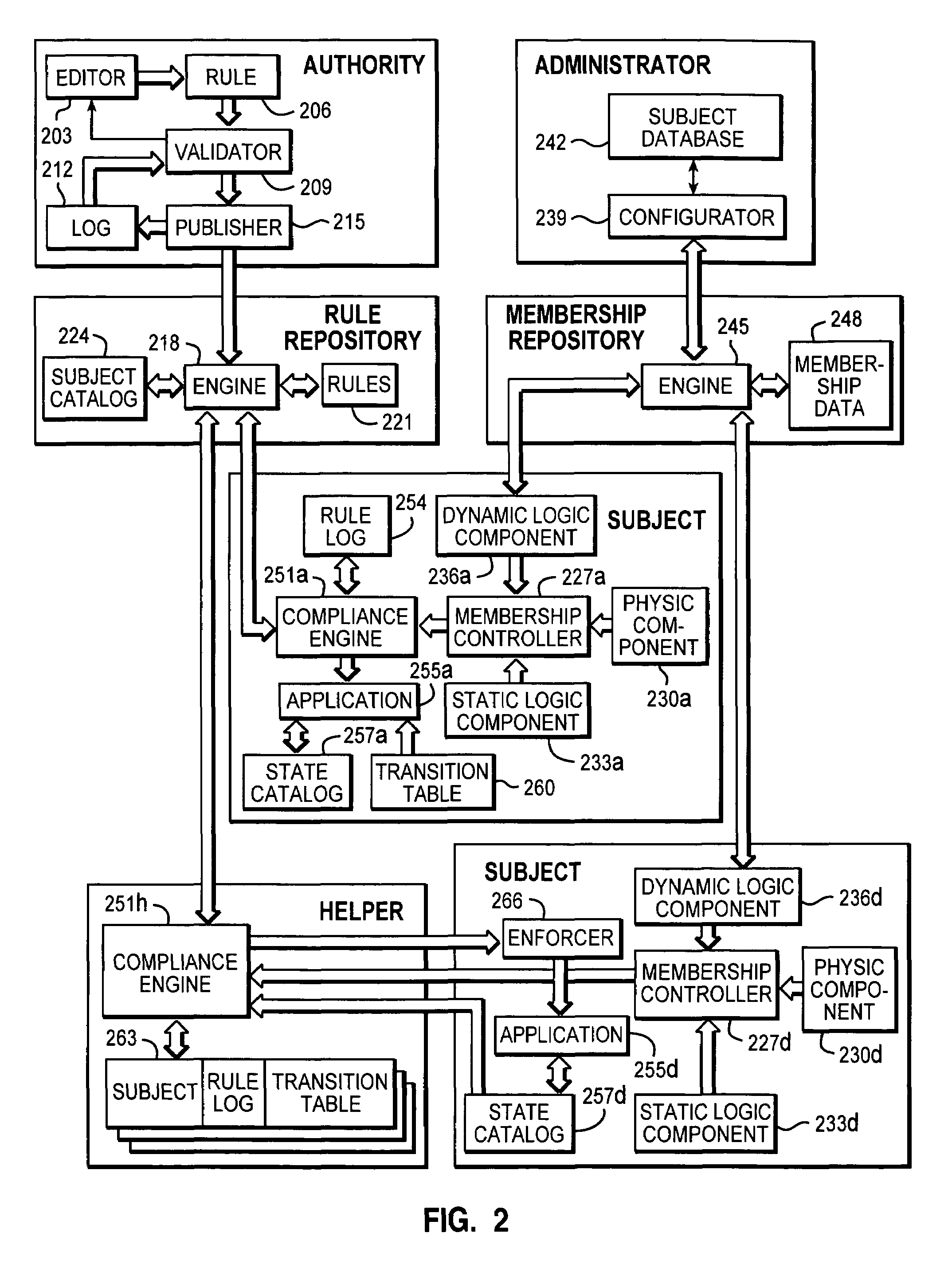Adaptive resource management helper component for facilitating autonomic management of subject entities
a resource management and helper technology, applied in the field of data processing, can solve the problems of lack of any kind of cooperation between the authority and the subject, high complexity, and incongruity of software products installed on the workstation with the hardware configuration
- Summary
- Abstract
- Description
- Claims
- Application Information
AI Technical Summary
Problems solved by technology
Method used
Image
Examples
Embodiment Construction
[0026]With reference in particular to FIG. 1a, a data processing system 100 with a distributed architecture (typically INTERNET-based) is shown. The system 100 implements an environment for managing several kinds of resources, such as products in a software distribution application, activities in a monitoring application, and the like.
[0027]A computer 105 operates as an authority, which is responsible to define a desired configuration of the resource management environment. Multiple computers 110a, 110d operate as heterogeneous subjects, which directly control (an instance of) one or more resources to be managed. Each subject 110a, 110d consists of a logic and / or physic entity (such as a laptop, a Personal Digital Assistant (PDA), a SIM card of a mobile telephone, every user of a workstation, and the like).
[0028]The authority 105 and the subjects 110a, 110d are coupled through a shared repository 115. The repository 115 stores a set of rules; each rule establishes the desired target...
PUM
 Login to View More
Login to View More Abstract
Description
Claims
Application Information
 Login to View More
Login to View More - R&D
- Intellectual Property
- Life Sciences
- Materials
- Tech Scout
- Unparalleled Data Quality
- Higher Quality Content
- 60% Fewer Hallucinations
Browse by: Latest US Patents, China's latest patents, Technical Efficacy Thesaurus, Application Domain, Technology Topic, Popular Technical Reports.
© 2025 PatSnap. All rights reserved.Legal|Privacy policy|Modern Slavery Act Transparency Statement|Sitemap|About US| Contact US: help@patsnap.com



